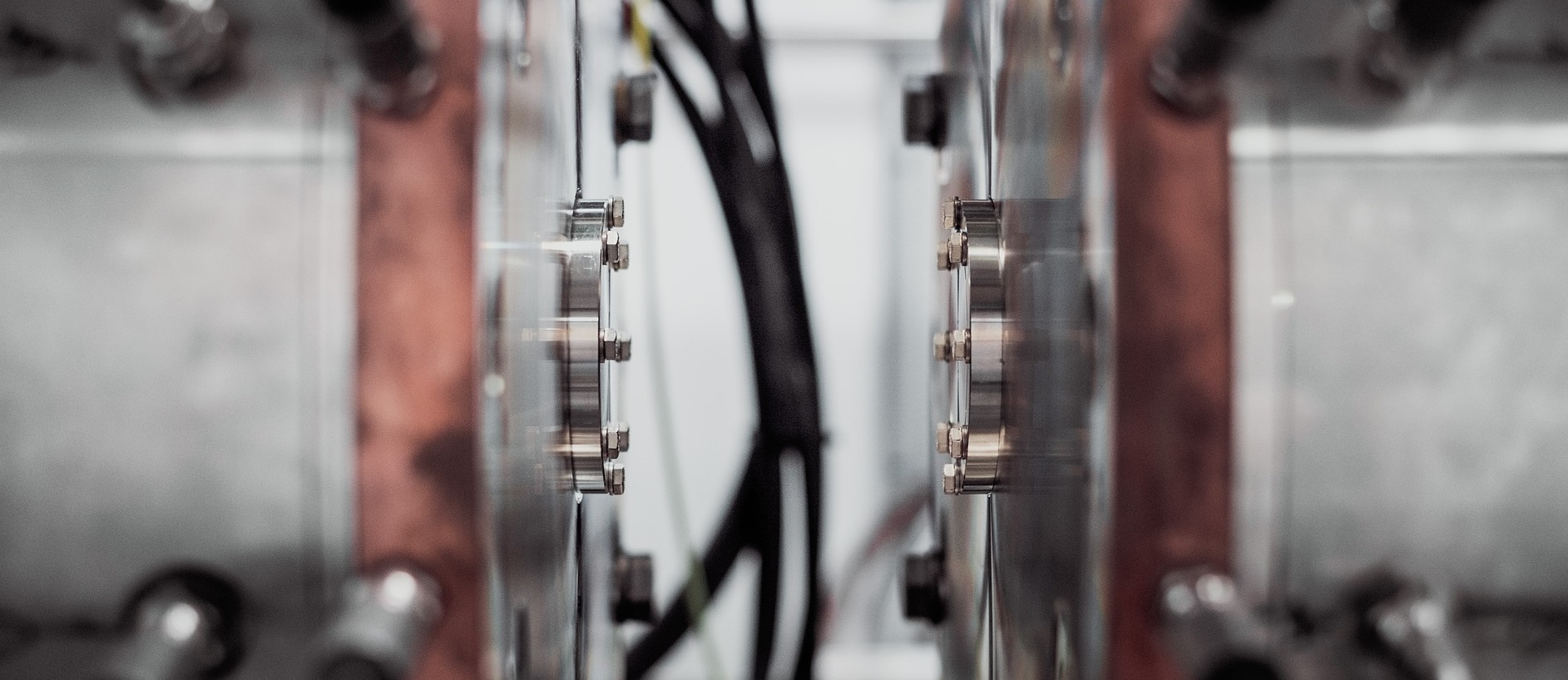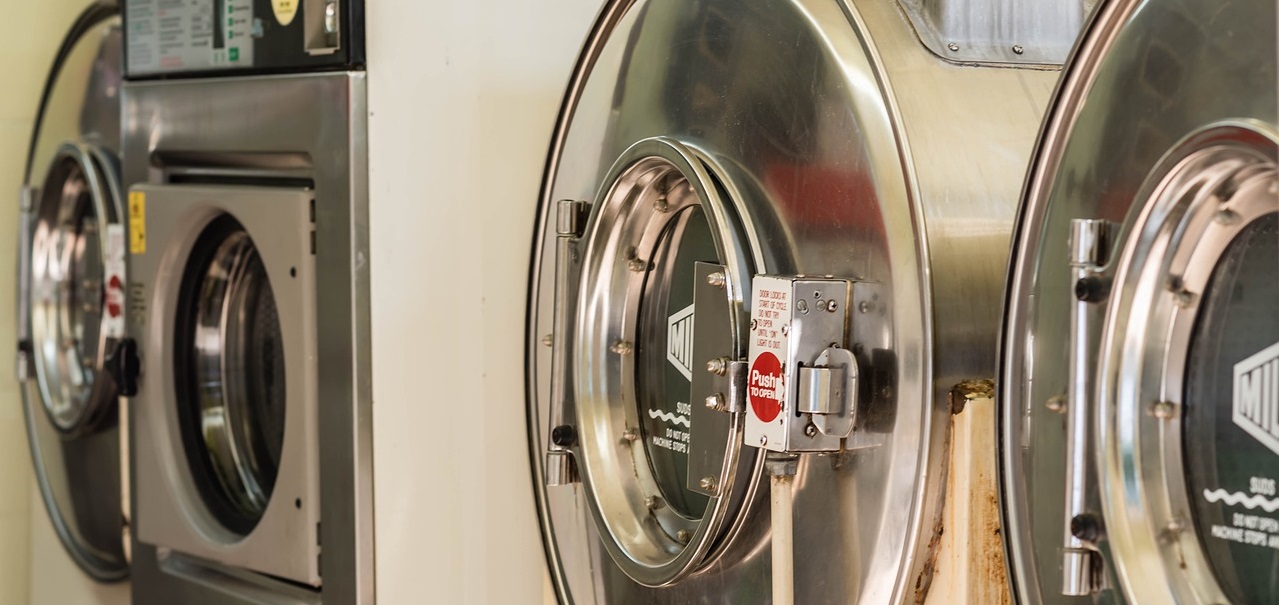What is the European Certification or European Conformity?
In order to legally sell a product within the European Union a manufacturer, importer or distributor must guarantee that his product is safe and meets all safety standards imposed by the European Union. These actors have to make relevant tests to ensure that their products meet these mandatory requirements imposed by the European Union and, if applicable, the corresponding national legislation. They must elaborate the regulatory technical documentation and keep it available to the relevant authorities. They must draft the Declaration of Conformity and label their products according to the applicable legislation. They must report their properties, content, possible warnings and known risks as well as include the CE Mark logotype (if applicable). This process is known as CE Marking, European certification, CE Certificate or European Conformity Evaluation.
CE Marking
CE marking is a conformity mark that the manufacturer (see definition below) places on products to sell them in Europe. This marking is mandatory for products that fall under one of the European directives (see table "Mandatory CE certification applies to the following product groups"). The CE marking indicates that the manufacturer assumes responsibility for complying with all European Union (EU) health, safety, efficiency and environmental protection requirements that apply to his products.
CE stands for "conformité européenne" (French for "European conformity"). This marking is mandatory in the 27 EU member states, as well as in Iceland, Norway and Liechtenstein. Switzerland uses the CE marking for some products, and even Turkey requires the marking to appear on a large list of products.
The manufacturer within the European conformity is a legal person or entity responsible for designing, packaging, and labeling of a product for the purpose of placing it on the market in its own name.
The CE marking provides access to the EU market of more than 500 million consumers. It does not compare to other conformity marks. Unlike the EAC (Eurasian Union), KC Mark, CCC Mark or UL (Underwriters Laboratories - Safety Standards and Certification) marking which cannot be used until the independent certification bodies have determined that the product meets the required standards, the right to use the CE marking is only granted to the manufacturer himself.
The right to affix the CE marking cannot be granted by any European authority, as it does not fall under the competence of any organization. Only the manufacturer, whether he is in the EU or outside the EU, is ultimately responsible for the application and proper use of the CE marking. Additionally, a manufacturer located outside the EU may allow an authorized representative from the EU to act on his behalf.
CE certification is not just about putting a symbol on a product.
The six basic steps of CE marking
Step 1: Identify one or more directives that apply to your products
How to get information if your products should be CE marked? The first step is to check that your products fall under one or more EU directives listed below. If your products fall under one or more of these directives, you must affix the CE marking to your product.
For more information, please visit the website of the European Commission (in English)
Mandatory CE certification applies to the following product groups:
|
Number of the directive |
Product categories |
|
2014/35/EU |
Equipment with certain voltage limits |
|
2014/29/EU |
Simple pressure vessels |
|
2009/125/EC |
Ecodesign requirements for energy-related products |
|
2000/14/EC |
Noise emission in the environment by equipment for use outdoors |
|
2009/48/EC |
|
|
(EU) 305/2011 |
|
|
2014/30/EU |
|
|
2006/42/EC |
|
|
(EU) 2016/425 |
|
|
2014/31/EU |
Non-automatic weighing instruments |
|
(EU) 2016/426 |
Appliances burning gaseous fuels |
|
92/42/EEC |
Hot-water boilers fired with liquid or gaseous fuels |
|
2014/28/EU |
Explosives for civil uses |
|
(EU) 2017/745 |
|
|
(EC) 1907/2006 |
Chemicals (REACH) |
|
98/79/EC |
In-vitro diagnostic medical devices |
|
2014/34/EU |
Equipment and protective systems intended for use in potentially Explosive atmospheres |
|
2013/53/EU |
Recreational craft and personal watercraft |
|
2014/33/EU |
Lifts and safety components for lifts |
|
2014/68/EU |
|
|
2014/53/EU |
|
|
(EU) 2016/424 |
Cableway installations |
|
2014/32/EU |
Measuring instruments |
|
2013/29/EU |
Pyrotechnic articles |
|
(EC) 661/2009 |
The general safety of motor vehicles, their trailers and systems, components and separate technical units |
What is an EU directive?
A directive is a legal document issued by the European Union that requires member states to adapt their national laws so that the result is data that can be harmonized under EU rules in the field. For example, the EU directive on products in the "Electromagnetic Compatibility" category (Directive 2014/30/EU) requires member states to ensure that electrical equipment in this category meets certain European product requirements:
“The EMC Directive limits the electromagnetic emissions from the equipment to ensure that, in normal use, the equipment does not interfere with the transmission of radio waves, communications equipment or other equipment. The directive also establishes rules regarding the immunity of the equipment from interference and ensures that the operation of the equipment in normal use will not be impaired by radio emissions.” - European Commission.
Please note the following:
It may be difficult to determine whether your products fall under one or more directives. For example, if you manufacture electronic conveyor belt packaging machines, you will have to deal with more than one directive. In order to determine which directive applies to your products, you will need to research each directive (a complete list of products is sometimes available in the annex). There is no handbook or database that tells you which directives may apply to which products/equipment.
The experts at CCIS-Expertise can help you navigate through this very complex system.
Next step
Once you have determined whether your product falls under one or more directives, you must assess your product's compliance with those directives and, if not, ensure compliance.
Step 2. Determine the basic requirements for products/equipment
Each directive describes in detail what the EU law counts as proof for products/equipment compliance. These are the "basic requirements" of the directive. These requirements are very general. The directives do not describe in detail how to design products to meet the basic requirements.
Harmonized standards
The European Commission often instructs European organizations (CEN, CENELEC and ETSI) to develop standards that are consistent and harmonized with the European product requirements of the directives (in English only). To find out if there is a harmonized standard for your product, visit the official website of the European Commission. Any product that complies with the harmonized standard is considered to meet the basic requirements of the applicable directives. For information on the availability and content of harmonized standards, please contact the following organizations:
CEN (European Committee for Standardization)
CENELEC (European Committee for Electrotechnical Standardization)
ETSI (European Telecommunications Standards Institute)
Other standards
In many cases, manufacturers can rely on norms other than the harmonized standards to prove that their products meet the basic requirements of the directives. However, there is one exception to this rule: the Construction Products Regulation (which replaced the Construction Products Directive), which makes the use of harmonized norms mandatory.
Recommendations of the European Commission
The European Commission provides detailed recommendations on the application of certain directives, including detailed information on the interpretation of the basic requirements of a directive. These recommendations are not legally binding (only the official text of the directive is binding), but they are often drafted in consultation with the state authorities of the member states applying the directives.
Please note the following:
The price of a harmonized standard can go up to 1,500 euros. However, this is an important investment. Manufacturers do not have to buy these documents to meet the basic requirements of the directive, but European authorities often use them to determine if a product meets the basic requirements. By working with the same documents, you can avoid any technical disputes about your product's compliance with the essential requirements of the directive. Note again that the basic requirements are often vague, leaving a wide margin for technical interpretation.
Example
Here is an excerpt from the table of harmonized standards for the construction products.
Harmonized standards for construction products:
|
Standard Reference and Name |
Reference to the Updated/Amended Standard |
Date of Entry into Force of the Standard as Harmonized European Standard |
The end date of the coexistence of the old and new standards |
|
EN 1:1998 |
EN 1:1998/A1:2007 |
01/01/2008 |
01/01/2009 |
|
EN 40-4:2005 Lighting columns - Part 4: Requirements for reinforced and prestressed concrete lighting columns |
EN 40-4:2005/AC:2006 |
01/10/2006 |
01/10/2007 |
Column 1: Name of the harmonized standard and its reference document.
Column 2: Reference of an amended standard, if any.
Column 3: Effective date of the standard.
Column 4: Date after which the old standard can no longer be used.
In the case of the above-mentioned building products the author is the European Committee for Standardization (CEN).
Next step
Once you know the basic requirements of the directives and the harmonized standards that apply to your product, you must determine whether your product meets the European product requirements that apply to it. A conformity assessment organization should test your product to certify its compliance.
Step 3. Do you need a third-party CE certification services?
Some directives require testing and certification of the products by a third party to comply with the basic applicable requirements. These third parties are usually called conformity assessment bodies, or certification bodies (CB) in Europe. If the provisions of the relevant directive(s) do not require the use of CB, manufacturers can carry out conformity assessment at their own facilities. The certification body is the company to which the European authorities grant the right to assess the conformity of products with the basic requirements of the applicable directives. CB also checks whether manufacturers have complied with steps 1 and 2, i.e. whether the principles and basic requirements relating to the product have been defined.
Certain directives oblige the manufacturer to use only CB for product-specific testing and certification. These are the directives for medical devices, equipment for use in potentially explosive atmospheres, pressure equipment, gas equipment and simple pressure vessels. The other directives do not require manufacturers to resort to CB, if they rely on a harmonized standard (see step 2) to determine if their product meets the basic requirements that apply. Nevertheless, these guidelines recommend that the manufacturer contacts CB for some products, especially when it is not based on a harmonized standard. This is particularly true of the directives applied to equipment and toy safety. The EU has reduced the list of products for which the use of CB is mandatory. Thus, the low-voltage directive does not require reference to CB. European authorities impose great responsibility on the manufacturers to ensure that their products are compliant.
Please note the following:
To find European product certification bodies authorized by European authorities to carry out conformity assessment, consult NANDO, a database of registered and accredited "new approach" organizations.
Manufacturers can find organizations registered by country and by directive. Most of these organizations are in Europe, but a few have branches or signed contracts with a European product certification bodies or testing laboratories in Canada, USA, etc. However, the experience of interaction with different participants of the process shows that when you apply to companies located directly in the European Union, the speed and quality of services increases significantly.
CCIS-Expertise has an office in the heart of Europe (Paris) and maintains the closest relations with European certification bodies and accredited laboratories. Our specialists speak French, English, German, and Russian, and our clients are located all over the world, be it in Russia, Ukraine, Kazakhstan, Belarus or Latvia, France and other EU countries, as well as, for example, the USA and Australia. You can learn more about CCIS-Expertise's services on this page: Services in obtaining CE marking or Request more information and find out the cost of services related to CE certification.
Step 4: Product Conformity Assessment Modules
How do you know that your product meets the basic requirements contained in the directives? You must check and confirm that the product actually meets them. Each directive describes procedures - so-called "modules" - for assessing compliance, which can be used by the manufacturer. There are eight conformity assessment modules. The relevant directives define the module or modules that belong to the category of the product in question.
Module A: Internal production control;
Module B: EC type examination;
Module C: Conformity to type based on internal production control;
Module D: Conformity to type based on quality assurance of the production process;
Module E: Product quality assurance;
Module F: Product check;
Module G: Unit verification;
Module H: Total quality control (EN ISO 9001).
Let’s take a closer look at Module B:
Manufacturer:
-
develops technical documentation related to the development, production, and operation of the product.
Manufacturer or certification body :
-
Requests CE type expertise
-
Makes available to the European product certification body a sample or samples that are representative of planned production
-
Informs the certification body about all changes in the approved product
-
Provides technical documentation, including a copy of the CE-type examination certificate, to the regulatory authorities
Certification Body:
-
Verifies, through examination and testing, that the samples meet the requirements and that they are manufactured in accordance with the technical documentation
-
Issuing a CE-type examination certificate
-
Keeps a copy of the CE certificate and a file of relevant documentation
-
Communicates with other certification bodies regarding CE-type certification information
These eight procedures can be reduced to two approaches:
- Manufacturer's conformity assessment. A manufacturer can engage a service provider to gain access to testing facilities, but it pays only for testing or other elements of conformity assessment, not consultation or certification, which is what CB is used for. If a company has the necessary facilities, it can do the conformity assessment itself. This method is much cheaper.
- Assessment of compliance by a certification body (CB)
It is the manufacturer's responsibility to contact CB, who will assess and certify the quality of the products produced, but ultimately the manufacturer remains responsible for complying with the basic requirements of the EU. Regarding CE marking, conformity assessment with European directives can consist of various activities, including product testing, visual inspection, risk analysis, and examination of product labeling and instructions. Typical steps that can be part of a conformity assessment include:
-
Expert review of technical documentation related to the design, production and operation of the product;
-
Testing one or more of the more specific properties of each product or product sample, or a sample of products;
-
Evaluation of systems related to the quality of the manufacturer's products;
-
Continuous verification of unit compliance
Please note the following:
Some directives allow the manufacturer to choose between different conformity assessment procedures (modules) for the same product. Knowing what each of the module consists in can save you a significant amount of time and money.
Next step
Your product has been tested and meets European Community standards. Now you need to prepare the technical documentation.
CE Certificate and CE Declaration - what is it?
A manufacturer wishing to enter the European market is required to undergo an evaluation of the conformity of his products with the requirements of the European directives under which his products fall. After undergoing this procedure, the manufacturer himself draws up a document called a CE Declaration. The CE Declaration generally contains the following information:
- Name and address of the manufacturer or his agent within the EU;
- Product description;
- Reference to harmonized norms or other technical standards used.
Where applicable, the CE Declaration is accompanied by a CE Certificate issued by the certification body that monitored the conformity of the products. Note that to meet the requirements of the directives relating to medical devices, equipment for use in potentially explosive atmospheres, pressure equipment, gas equipment and simple pressure vessels, the manufacturer must engage an authorized Certification Bodies and obtain CE Certificates. For products such as children's toys and industrial equipment, the relevant directives recommend obtaining CE certificates through accredited certification bodies. For more information on the CE Declaration, see "Step 6: Declaration of Conformity and application of the CE marking".
Step 5: Preparation of technical documentation and its updating
All directives concerning the CE marking oblige the manufacturer to develop and provide technical documentation (or a set of technical documents aka technical certification file) confirming that the product meets the requirements of the directive.
The technical documentation for products with a CE marking must be kept for at least 10 years from the last fabrication date of the product unless the directive specifies a longer period. You must be able to provide the technical documentation on request to verifying authority responsible for implementation of the directive/standard at a short notice. The technical documentation must be kept up to date, especially if the product has been modified or has been the subject of a conformity assessment procedure.
Although a number of directives and national European labelling laws require that user information (e.g. user manuals) are translated into the official languages of the countries where the product is sold, the rest of the technical documentation can be kept in any EU language (including English or French).
Location of technical documentation
EU legislation does not require that the technical documentation is stored in Europe. This is not the case for the declaration of conformity (see step 6). Nevertheless, EU importers must ensure that the exporter provides this documentation to the EU authorities responsible for sales. In addition, EU importers and distributors who market products under their own names are required to have a copy of the complete technical documentation.
Examples
Technical documentation required by the Low Voltage Directive (LVD):
-
Details of the design, manufacture and operation of electrical equipment, insofar as this is necessary to assess the conformity of this equipment with the directive;
-
General description of the electrical equipment;
-
Design and production drawings, as well as diagrams of components, assemblies, circuits, etc.;
-
Descriptions and explanations necessary to understand these drawings and diagrams and the operation of electrical equipment;
-
List of standards applied in whole or partially and description of the solutions adopted to meet the safety aspects of this directive, if no harmonized standards have been applied;
-
Results of calculations, design, testing, etc.;
-
Test reports (by the manufacturer or a third party).
Technical documents required for the Electromagnetic Compatibility Directive (EMC):
-
Identification of the product covered by the technical document. This definition should allow to unambiguously link the technical document and the product.
-
General description of the device. The amount of information needed will depend on the complexity of the device. One device can be completely defined in one line, while a more complex device may require a full description (images can be attached).
-
If you have applied harmonized European standards, proof of compliance is required. At a minimum, this should be a dated list of the harmonized European standards applied and the results obtained.
-
If the European standards have not been applied or have been only partially applied, give a description of the measures taken to meet the basic requirements - these must include an assessment of electromagnetic compatibility as described in annex II of the directive. The documentation shall include test reports, calculations made, checks, etc.
-
If EMC Appendix III applies, the manufacturer he must provide a declaration to CB.
Step 6. Declaration of Conformity and application of the CE marking
The document that certifies compliance with the EU Directives is the Declaration of Conformity. The Declaration of Conformity is the manufacturer's approval of responsibility for the conformity of his products with the applicable directives. This document is under the sole responsibility of the manufacturer, and the Declaration of Conformity is a legal obligation. The Declaration must be made available to the authorities when crossing the EU border. Unlike technical documentation (which does not have to be common to all importers and distributors in some cases - see step 5), the Declaration of Conformity must be available to distributors in the EU, who may be obliged to make it available immediately on request to national authorities.
In general, the Declaration of Conformity is a one-page document that specifies:
-
Manufacturer's information;
-
To which product the Declaration applies;
-
What directives it concerns;
-
What standards have been met;
-
Where the test results are available;
-
Responsible person in the company.












